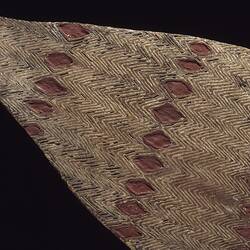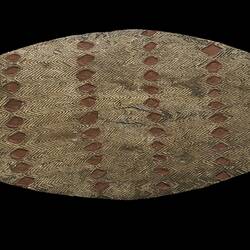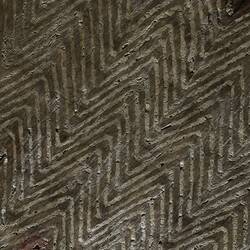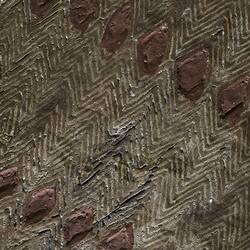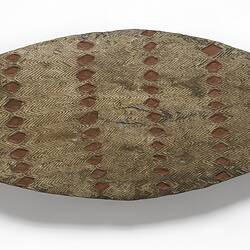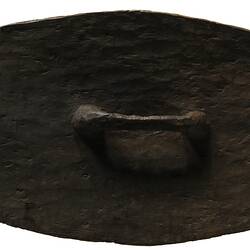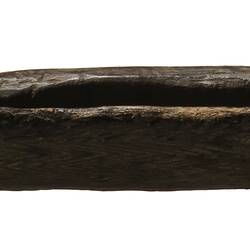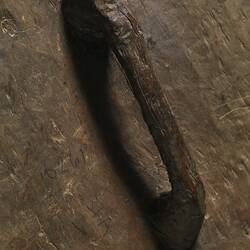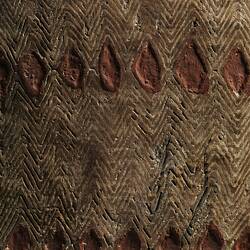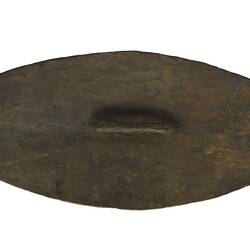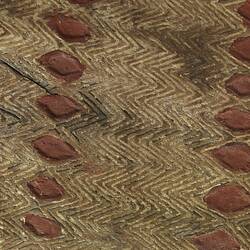Summary
Broad shields were generally used to deflect spears and their handles were either carved into the reverse side or fixed as a separate handle into holes drilled into the back. The Manna gum (Eucalyptus viminalis) was often used to make these shields, which are known by Aboriginal names such as Gee-am, Kerreem and Bam-er-ook. Tools made from stone and animal incisors (such as from marsupials) were used to engrave the surface with intricate designs. The history of the 'ownership' of such objects between leaving the possession of Aboriginal people and becoming into the museum's collections is diverse and often obscure. Early collectors acquired objects such as these because it was believed that Aboriginal people were 'a dying race', and this belief and the growing interest in ethnography created a very robust trade in Aboriginal objects in the earliest decades of settlement in New South Wales and Victoria.
Physical Description
A broad shield with tapering ends made from a single piece of hardwood painted with natural pigments. The concave outer surface is decorated with alternating bands of incised chevron patterning infilled with white pipe clay and rows of diamond shapes painted with contrasting red ochre. The handle is carved out of the reverse side.
Significance
This shield is decorated with elaborate and distinctive designs typical of the art of southeastern Australia. The major motif incised across almost the entire outer surface and infilled with white pipe clay is a classic zig zag or herringbone pattern. This is interrupted by horizontal rows of diamond shapes cut into the surface and painted with red ochre. This fine work and contrasts in patterning and colour makes for a very fine aesthetic. gwork. he offset with dots used in two section in contrast to tcross the rest of the face. No documentation has been located where the shield was collected, however it was donated by Albert Le Souëf, whose father was one of the earliest Aboriginal Protectors in Victoria. William Le Souëf established the Murchison Aboriginal Station on the Goulburn River in the 1840s.
More Information
-
Object/Medium
Shield
-
Maker
-
Locality
Specific locality unrecorded, Gippsland, Victoria, Australia
-
Date Produced
-
Date Collected
-
Object Measurements
1025 mm (Length), 285 mm (Width), 60 mm (Height), 0.8 g (Weight)
-
Keywords
-
References
[Catalogue] Rowlison, Eric, et al. 1981. Aboriginal Australia.
[Book] Museum Victoria. 2004. Treasures of the Museum. Victoria, Australia. 206.
-
Type of item
-
Discipline
-
Category
-
Collecting Areas

